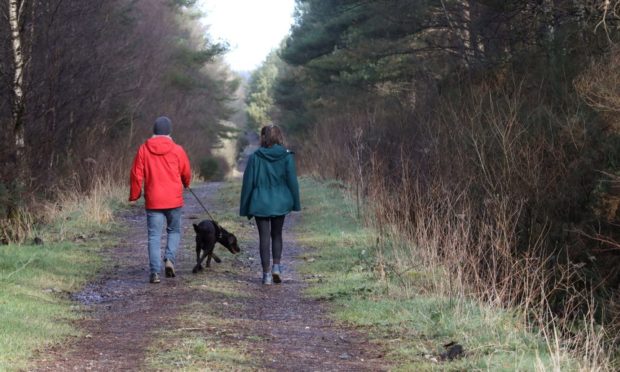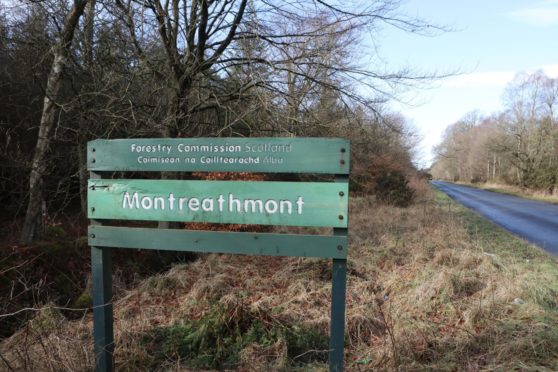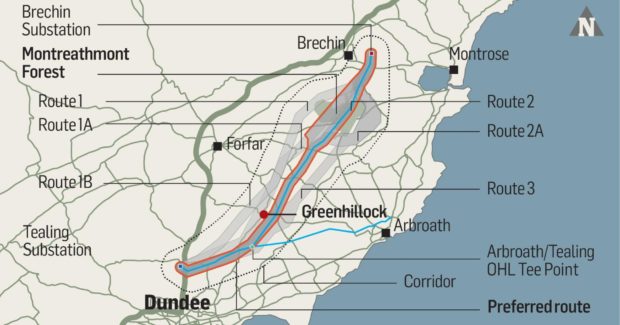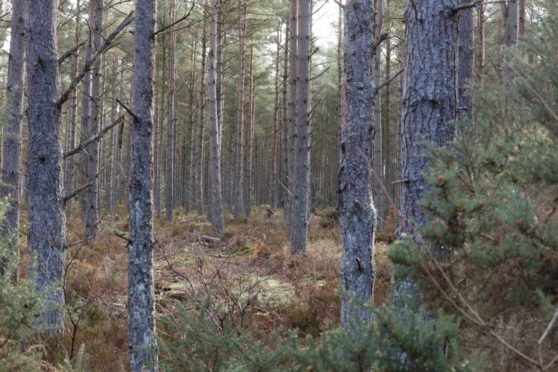Scotland’s leading woodland charity has criticised plans for an Angus powerline that could see the destruction of rare pockets of ancient woodland.
SSEN Transmission is consulting on three main routes for a new 132kV overhead powerline, running from west of Aberdeen to Tealing, north of Dundee.
The company has said the line is essential to connect renewable power to the national grid. Its current preferred route runs through Montreathmont Forest, near Brechin.
Woodland Trust Scotland has said it has “serious concerns” over the plan, which could affect “at least 25 ancient woodlands and one veteran scots pine.”
Veteran trees are judged to be irreplaceable parts of Scotland’s flora and fauna.
A further area of ancient woodland is within very close proximity to the scheme, the charity pointed out in its response to a SSEN Transmission consultation.
‘Irreplaceable habitats’ at risk
The line will replace an existing 132kV line that already runs over the forest. The new line could be carried between 27m steel lattice towers where the existing line runs on shorter wooden poles.
Nicole Hillier, Woodland Trust Scotland campaigner, responded on behalf of the charity.
She said: “Ancient woodland and veteran trees are irreplaceable habitats that must be protected from damage, loss and deterioration.
“It is imperative that any new development does not diminish these precious sites and that every possible measure is explored to prevent adverse impact.
“The Woodland Trust strongly opposes this scheme on the grounds of serious impact to several areas of ancient woodland and a veteran tree.
“The preferred route should fully consider all areas of ancient woodland and protect them from detrimental impact and loss.”
The charity believes the development could lead to direct loss of ancient woodland within “the corridors” the company has identified for the work.
Campaigners also fear the construction could lead to workers trampling sensitive ancient woodland flora and soils if access is required through the ancient woodland sites.
Work could also have a damaging effect on wildlife, the charity added.
“Development in ancient woodland can lead to long-term changes in species composition, particularly ground flora and sensitive fauna,” said Ms Hillier.
“For example, nesting birds, mammals and reptiles.”
‘Critical national infrastructure’
The Woodland Trust owns over 1,000 sites across the UK, covering approximately 27,000 hectares (ha).
In Scotland it owns and cares for around 60 sites covering an excess of 11,300ha.
This include the 5,000ha Glen Finglas estate near Loch Lomond and significant urban forestry holdings in Glenrothes and Livingston.
Tourism businesses along the proposed routes have also shared their concerns about the plans.
An SSEN Transmission spokesman said: “As a responsible developer, we are committed to work with all stakeholders throughout the development of this critical national infrastructure.
“We would like to thank the Woodland Trust for its feedback. This will be carefully considered as we seek to develop an acceptable solution that balances technical and environmental considerations.”



